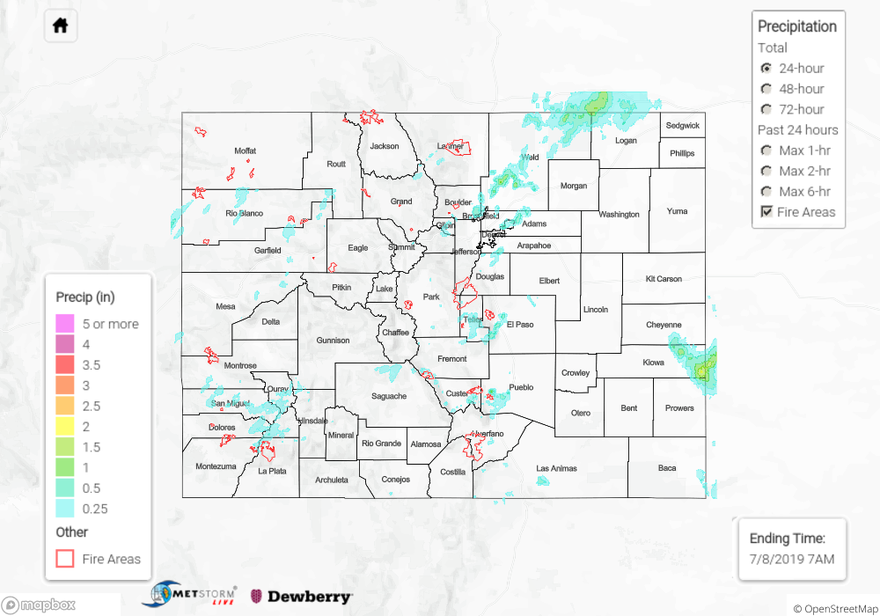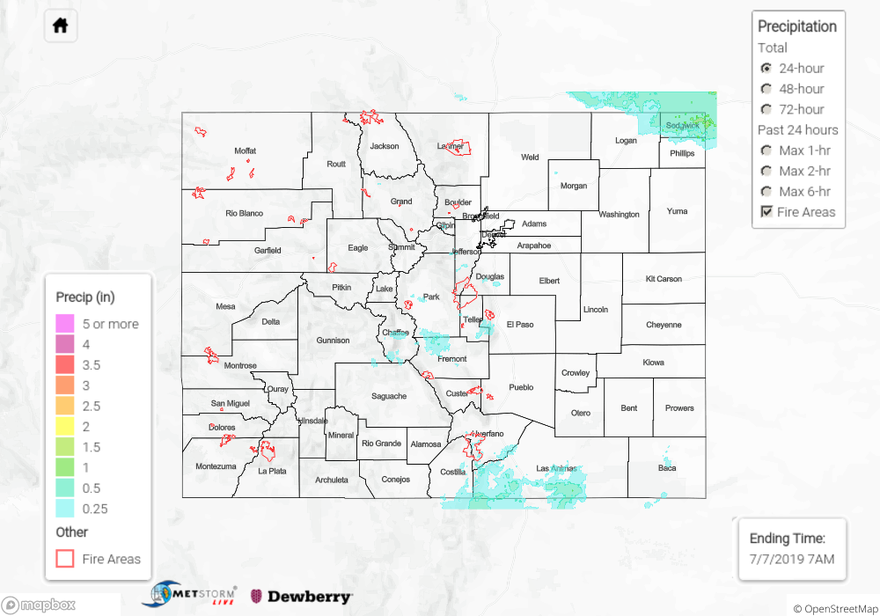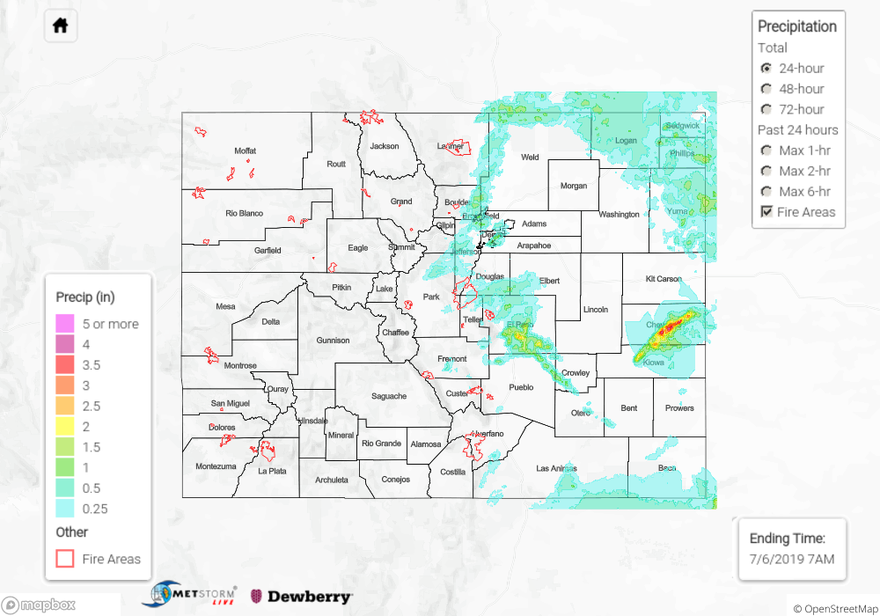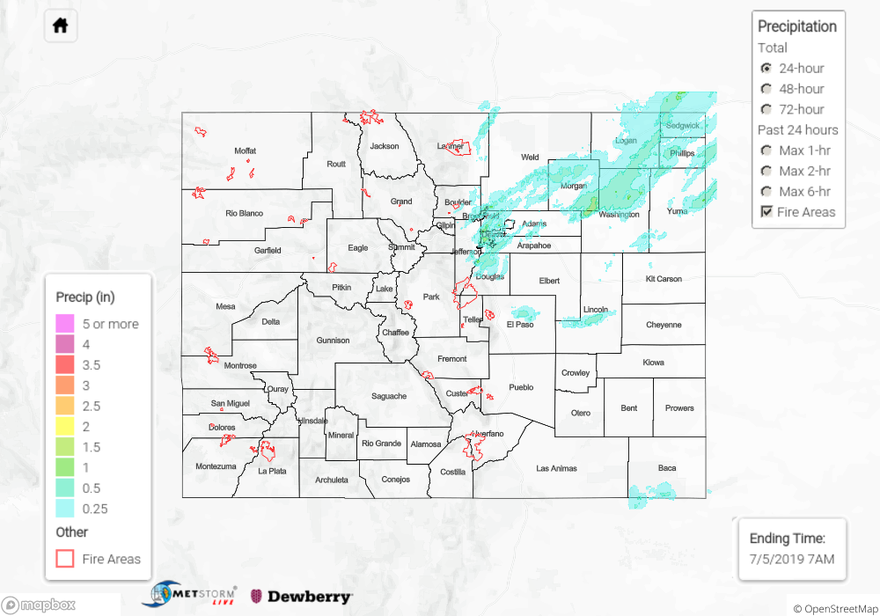Issue Date: Monday, July 8th, 2019
Issue Time: 10:00AM MDT
Summary:
Similar pattern to Saturday across the state with an increase of moisture over western Colorado (northward), which allowed showers and weak thunderstorms back into the forecast across the western region. Passing shortwaves from the trough and around the high pressure helped kick off a little more widespread activity with the diurnal flow pattern. Storm motion was to the northeast, but back building allowed for some higher accumulations. Storms to the west produced strong gusts, plentiful lightning and spots of moderate rainfall totals for this time of year. Outflow gusts from storms were measured around 50 mph at various locations. There was a rainfall report of 0.78 inches of rain in Montrose with 0.64 inches reported in Durango. 24-hour totals just north of the 416 fire were just under 0.5 inches. Over Marvel, CO a CoCoRaHS station recorded 0.84 inches.
To the east, highest accumulations were over the northern Urban Corridor and Kiowa County with storms moving off the high terrains around 4PM. Storms had some decent low level moisture to work with over the adjacent plains, and with trailing storms, totals by radar were estimated as high as 1.5 inches. An Areal Flood advisory was issued over the area of this storm, but flooding was not reported as of this morning. Hail also accompanied the storms with reports of 0.75 inch diameter hail in Lafayette and Louisville. At 5:50PM MDT, a Flood Advisory was also issued for the Hayden Pass burn area. Radar estimated up to 0.35 inches of rain fell over the scar, but flooding was not reported. Lastly, an outflow boundary from convection in Kansas kicked off a thunderstorm over Kiowa County in the moisture rich environment around 1:30 AM. Radar estimates around 2 inches of rain fell with this storm.
No NWS Flood Warnings were issued for riverine flooding yesterday. However the Blue River below Dillon and Roaring Fork River in Pitkin County had Flood Advisories for Minor flooding of low lying areas next to the river, including pedestrian paths. To see the latest Flood Advisories, click the FTB and scroll down the riverine section.
Outside of Minor lowland flooding along the Roaring Fork River, flooding was not reported yesterday. To see estimated precipitation totals over your area on Sunday, scroll down to the State Precipitation Map below.
Click Here For Map Overview



